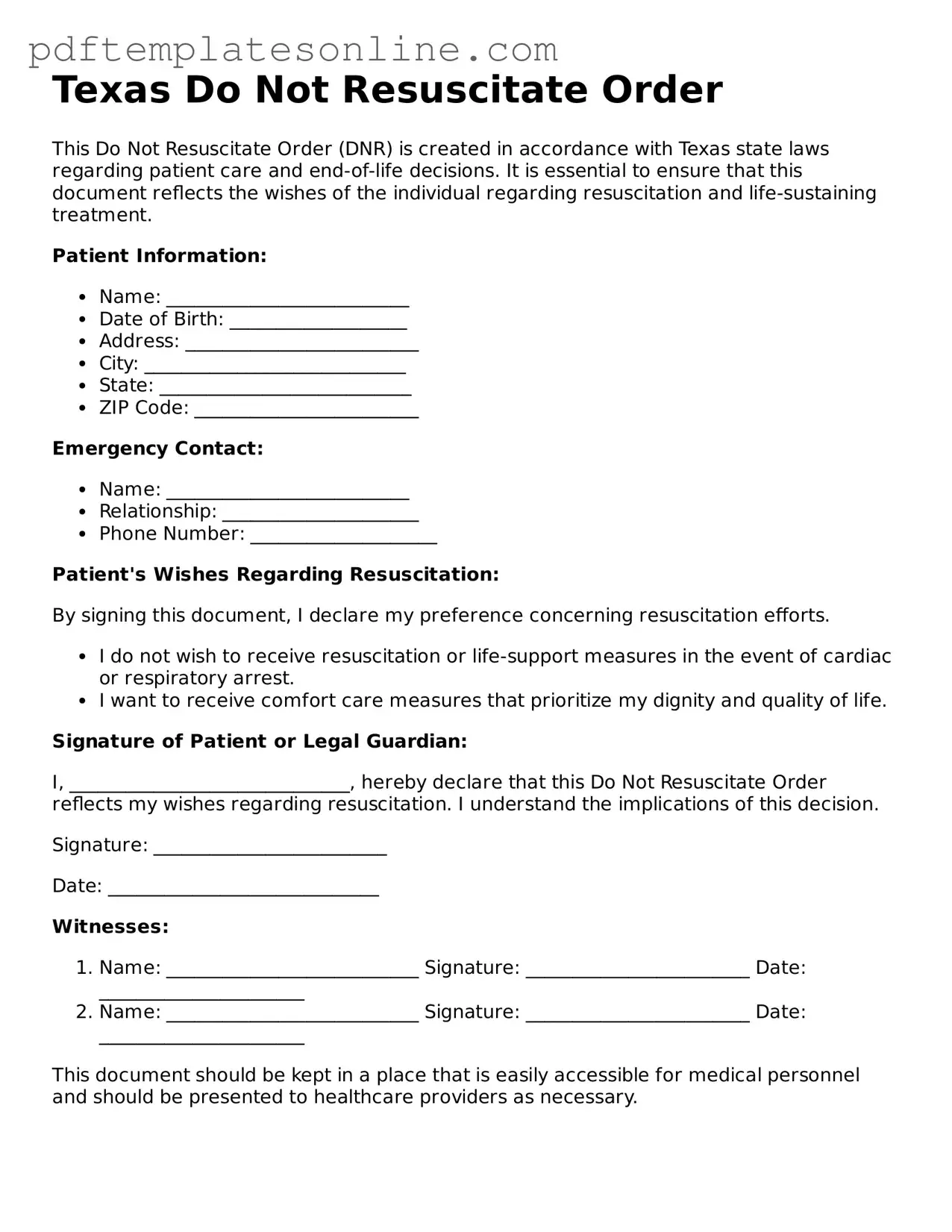Filling out a Texas Do Not Resuscitate (DNR) Order form is an important decision that can greatly impact a person's medical care at the end of life. However, many individuals make mistakes during this process that can lead to confusion or unintended consequences. One common error is failing to complete the form in its entirety. Leaving sections blank may cause medical personnel to question the intent behind the DNR, potentially leading to unwanted resuscitation efforts.
Another frequent mistake is not having the form signed by the required parties. In Texas, a DNR Order must be signed by the patient or their legal representative, as well as a physician. Without these signatures, the document may not be considered valid. It is crucial to ensure that all necessary signatures are present before the form is presented to medical staff.
People often overlook the importance of discussing their wishes with family members and healthcare providers. A DNR Order is not just a piece of paper; it represents a person's values and preferences regarding end-of-life care. By failing to communicate these wishes, individuals may leave their loved ones uncertain about their intentions, which can lead to stress and conflict during critical moments.
Another mistake involves not keeping the DNR Order accessible. Once the form is completed, it should be stored in a place where it can be easily found by medical personnel. If the document is not readily available during an emergency, there is a risk that resuscitation efforts could be initiated against the individual's wishes.
Some individuals also forget to review and update their DNR Orders regularly. Life circumstances can change, and so can a person's preferences regarding medical treatment. It is advisable to revisit the DNR Order periodically to ensure it still reflects the individual’s current wishes and to make any necessary adjustments.
Finally, misunderstanding the implications of a DNR Order can lead to mistakes. Some people mistakenly believe that having a DNR means they will not receive any medical care. In reality, a DNR Order only pertains to resuscitation efforts and does not prevent the patient from receiving other forms of medical treatment. Clarifying this distinction can help individuals make informed decisions about their healthcare.
